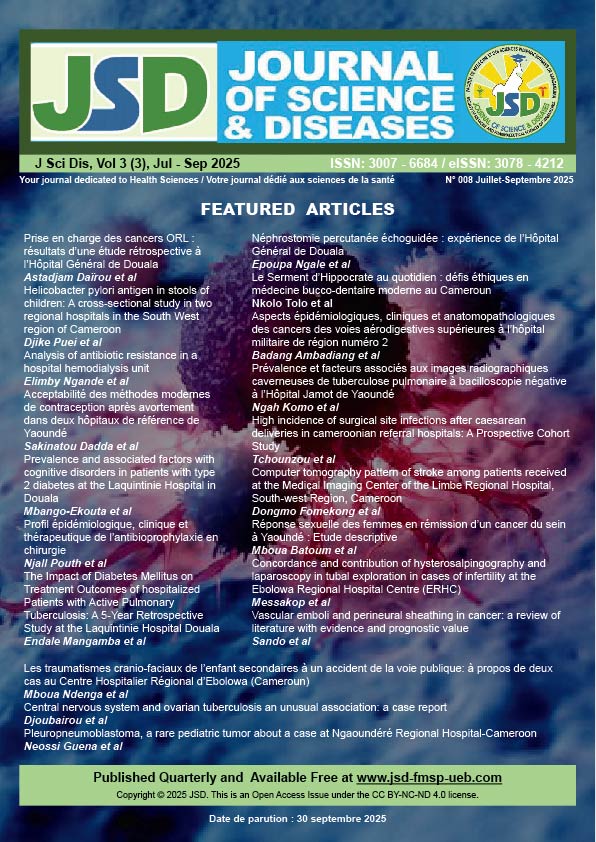Prevalence and factors associated with cavernous radiographic images of smear-negative pulmonary tuberculosis at Jamot Hospital in Yaoundé
DOI:
https://doi.org/10.64294/jsd.v3i3.137Keywords:
Cavern, pulmonary tuberculosis with negative smear microscopyAbstract
Introduction: The aim of our study was to determine the prevalence and factors associated with cavernous radiographic images of smear-negative pulmonary tuberculosis (SN-PTB) at Jamot Hospital in Yaoundé.
Methodology: This was a cross-sectional study conducted at Jamot Hospital in Yaoundé from November 1, 2023, to June 31, 2024. Patients aged 18 years and older with negative smear microscopy results and chest X-rays were included. Data were collected using a technical data sheet and analyzed using R software version 4.2.3. Cavitary TB-was defined as the presence of one or more cavities on chest X-ray associated with a negative smear test and clinical findings suggestive of tuberculosis. Prevalence was expressed as a percentage with a 95% confidence interval, and multivariate analysis was used to identify associated factors. The significance threshold was set at 5%.
Results: A total of 251 cases were selected. Males accounted for 54.2%, the informal sector for 67.3%, and single status for 53.8%. The prevalence of cavernous lesions in TPB- was 35.45% with a 95% confidence interval [29.54–41.72]. Factors associated with cavernous lesions in TPB- were HIV infection (p<0.00) and radiographic lesions, the presence of micronodules (p=0.001), and the presence of infiltrate (p=0.012).
Conclusion: The prevalence of cavernous lesions in TPB- is high. Associated factors were HIV infection, the presence of micronodules, and reticulonodular infiltrate



